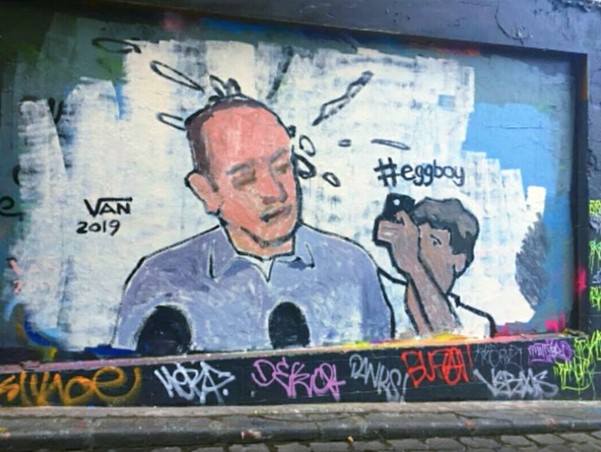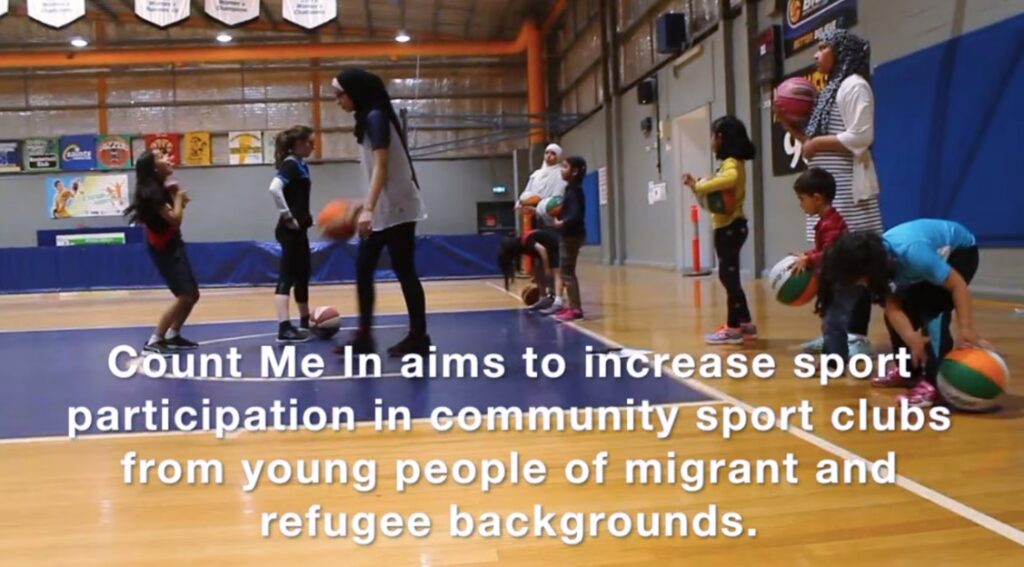
The Challenges that Culturally and Linguistically Diverse Young People Face in Victorian High Schools
This is the second of four blogs that seek to explore, through an extensive review of the literature, the proposition that ‘wild pedagogies’, as an element of a wider framework of regenerative education, have the potential to reengage CALD young people in the senior years of schooling. Blog One explored the polycrisis of the Anthropocene to contextualise the educational experience for CALD students. In this blog I will explore the meaning of the term Culturally and Linguistically Diverse (CALD), before examining some of the key themes within the research literature regarding the challenges faced by CALD young people in Victorian State education.
Culturally and Linguistically Diverse Young People
The term CALD is unique in capturing Australian diversity (Pham et al. 2021:737; Wang 2023:1). Throughout the literature, many authors find the term problematic due to its scope (Pham et al. 2021:737; Marcus et al. 2022:7). In refining this term, Van Kooy and Butler (2021:2), state that the ‘forms of educational disadvantage are not universal for people with CALD backgrounds, nor is there a ‘typical education pathway for refugees’’. They recommend further terms of ‘refugee status’, which will be adapted here due the heightened experiences within the CALD group (Van Kooy & Butler 2021:2). Migration pathways for CALD and refugee young people are often traumatic.
In the Emerging Minds podcast on the mental health of refugee children in Australia, Terhaag discusses the factors impacting on the well-being of refugee children, among them war, conflict, violence and torture (Terhaag & Guy 2020). These experiences converge with barriers to resettlement, including employment challenges, language barriers, racism and discrimination, housing and accommodation challenges, and social connections (ECU 2023; BNLA 2023). These barriers are often magnified within a traditional school setting (Ollif & Couch 2005:44). In what follows I will explore some of the challenges experienced by CALD young people in the education system, before moving to examine the utility of flexible learning programs in helping to reengage CALD students.
A Sense of Belonging
In the research literature on the challenges experienced by CALD young people at school, a sense of belonging emerges as a key theme (Miller et al. 2017:339; Khawaja & Howard 2019:110; Allen et al. 2018:1; Kovinthan 2016:141; Crawford 2016:343; Correa-Velez et al. 2010:1399; Lawrence et al. 2022:52; Nguyen & Kuyini 2022:2; Crawford 2020:248; MacDonald 2016: 1182). Indeed, the strong identification of a sense of belonging is directly linked to academic performance, prosocial behaviours, and psychological well-being (Allen et al. 2018:1; Sari 2012:1). Allen et al. (2018:5) found that ‘belonging’ is multifaceted, with factors at the individual level, the micro level, and the macro level influencing a student’s sense of belonging. Micro-level influences include teachers, peers, and parents. At the macro-level exists the role of the school community in facilitating belonging. Allen et al. (2018:2) define ‘belonging’ in the school context as follows:
The extent to which students feel personally accepted, respected, included, and supported by others in the school social environment. This definition emphasises the multiple features of school belonging for students, as well as the broader socio-ecological context for peers, students, and teachers within the school environment.
Individual factors of academic motivation, personal characteristics, negative personal factors, and demographic factors appear in the literature on student belonging (Allen et al. 2018:4). Regarding academic performance, CALD students often have decreased English proficiencies and disrupted learning backgrounds (Schweitzer et al. 2021:594). As noted by Miller et al. (2017:339):
Students placed in classes with an ill-matched level of academic challenge may feel that there is no way forward … Age grouping rather than ability grouping means that some students with a history of interrupted schooling may find it difficult to keep up.
Thus, students who perceive themselves as behind feel less confident and academically unmotivated, which reduces their sense of belonging (Amina et al. 2023:2; Khawaja & Howard. 2021:110). Personal attributes, abilities, temperament, and coping skills are also important in facilitating belonging (Allen et al. 2018:4; Chen & Schweitzer 2019:1977). Research finds that CALD student well-being is increased when they demonstrate resilience, agency, or a sense of control (Correa-Velez et al. 2010:1401; Tozer et al. 2018:69; Chen & Schweitzer 2019:1984). Negative personal factors, including anxiety, depression and stress negatively impact CALD students’ well-being (Allen et al. 2018:5: Reavell & Fazil 2016:77; 78). Correa-Velez and colleagues (2010:1402) found that one in five students had experienced ethnicity or religion-related discrimination. Another study found that 91% of African-Australian students experience racism in schools (GIER, 2022). Thus, discrimination and racism remain prominent barriers for CALD students.
Flexible Learning Programs
There is a growing body of research literature which suggests that Flexible Learning Programs (FLPs) show promise in meeting the needs of disengaged CALD young people (Cain et al, 2015:105; Pearce et al, 2010:294; Leif et al, 2021; Schweitzer et al. 2021:598; Uptin & Harwood 2013:125; Spaajj et al. 2019; Shephard & Musaka 2021:469; Stokes & Aaltonen 2020:2; Van Kooy & Butler 2021:12). FLPs are educational services offered to students who may not be suited to traditional education settings, including those considered ‘at-risk’, or of CALD or refugee backgrounds (Snow et al. 2019:425). FLPs are provided by non-government not-for-profit, or government organisations, including FLPs within mainstream schools, Technical and Further Education (TAFE), community colleges, and separate operations (Snow et al. 2019:425). As discussed by Snow et al. (2019:425), FLPs emphasize engagement activities and relationships to develop students’ sense of belonging, ‘to keep students engaged in learning long enough for them to attain the foundational skills necessary to succeed in further education, training, and/or employment’. FLPs differ from traditional education settings and approaches both in learning environment, and in terms of curriculum or content, and I will examine each of these factors in turn.
Learning Environments
FLPs that offer alternative learning environments have been recommended widely for disengaged CALD young people (Stokes & Anderson 2021:2; Thomas et al. 2017:443; McGregor & Mills 2011854). McGregor and Mills’ (2011) paper on Australian FLPs highlights the importance of a relaxed environment, in terms of attendance, uniform, assessments, and behaviour, in facilitating a sense of community. As seen in one student’s description:
Because you get flexible hours here and stuff, if you’re working then you can pick the day you need to do subjects on … I only do two subjects here… I’m hopefully going to be doing full-time now. (McGregor & Mills 2011:854)
Stokes and Aaltonen’s (2021) analysis of time-space paths explored the ramifications of a traditional school setting for students who are unable to manage ‘tight time-space pathways’. Shephard and Musaka (2020) studied CALD young people involved in the criminal justice system, and found that FLPs that were co-designed with target groups, were culturally responsive, and had flexible opening hours, increasing learning appeal. Thomas et al. (2017) redefine the markers of success for FLPs, moving from standardised markers to holistic measures of ‘distance travelled’:
A kid … who’s negative, really unhappy – to all of a sudden see a brief smile, to me, that’s a start but that’s something that’s very hard to measure on a piece of paper. (Thomas et al 2017:448)
In providing students with agency and a sense of control, FLPs can help to foster young people’s well-being, sense of belonging and educational engagement (McGregor & Mills 2011:859; Thomas et al. 2017:450).
Teaching Programs
FLPs that offer alternative teaching programs in terms of curriculum or content are shown to be effective throughout the literature (Thomas et al. 2017:443; Stokes & Aaltonen 2021:5; McGregor & Mills 2011:854). Teaching programs offered within an FLP are largely defined by their cohort’s needs and age (McGregor & Mills 2011:853). Core elements here include small learning groups with reduced students to teacher ratios, and alternative pedagogical approaches such as hands-on learning, applied, experiential, practical or community-based learning (Stokes & Aaltonen 2021:5). One student discusses his teacher:
They’re a lot more personal and they sit there and help you … and they go round and check on different people. And everyone is at a different level so it’s not like you have to keep up with people, you go at your own pace. (McGregor & Mills 2011:857)
There is a considerable body of literature on music, art and sport programs offered to reengage CALD students (Crawford 2019:248: Marsh 2012:93; Spaajj et al. 2019:1). Such subjects provide opportunities for cross-cultural exchange and social connection (McGregor & Mills 2011:854). In one case study, Crawford (2019:425) discusses the impacts of one music elective, which utilises the pedagogy of a constructivist approach with flexible and experiential learning. The benefits of the music program for CALD students were in supporting students to consolidate friendships and overcome learning and language barriers.

Image credit Count Me In (2022)
In 2022 the University of Melbourne and the Melbourne Social Equity Institute commissioned a sports participation program named Count Me In for migrant and refugee-background young people (MSEI, 2022). The program was aimed at reducing barriers to inclusion for the group. Key elements of the intervention included employment of bicultural community support coordinators, partnerships with clubs and community-based organisations, encouragement of volunteering and development of resources (Young & Block 2023: 1227).
To summarise, traditional education frameworks are often inadequate in meeting CALD students’ learning, teaching and cultural needs (Ollif & Couch 2005:44). Students feel they do not belong due to barriers at the individual, micro and macro levels (Allen et al. 2018:4). FLPs show their potential in reducing barriers through offering individualised, relational, and culturally sensitive learning (Allen et al. 2018:5). At the core of these teaching programs are efforts to support students’ well-being, reignite their love and respect for learning, enhance human connection, culture, and the development of strong relationships, and promote the development of skills that allow lifelong learning for students (McGregor & Mills 2011:854).
